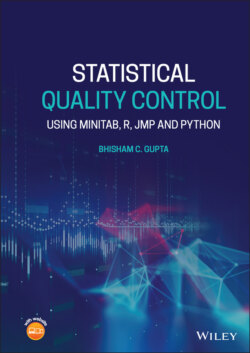Читать книгу Statistical Quality Control - Bhisham C. Gupta - Страница 52
2.4.2 Lean Tools
ОглавлениеRecently, the Six Sigma methodology has been enhanced by incorporating the tenets of Lean Thinking. The Lean philosophy places importance on mapping the value stream and stresses the elimination of waste and continuously improving processes. Lean tools such as Eight Wastes, visual management, the 5S method, value stream mapping, mistake‐proofing, and quick changeover have become powerful tools used in the Improve and Control phases of Six Sigma projects. Together, Six Sigma and Lean deliver higher quality, increased efficiency, and flexibility at a lower cost.
The Lean philosophy follows five principles. First, we specify value, as perceived from the end user’s point of view. Next, we identify the value stream, which includes all the activities performed from the time of customer order to delivery. Every task we perform can be classified as value‐added or non‐value‐added. Third, we create flow so that our product – parts or paperwork or information – moves through the system without any hiccups. Fourth is the idea of pulling from the customer, meaning that we will make a product when a customer orders it, as opposed to making products that sit in inventory. Finally, we seek 100% quality and perfection in our operations. Contrast this to the Six Sigma goal of 3.4 DPMO, which is the result after the 1.5σ shift. The Lean goal of perfection lends itself to the idea of continuous improvement: we can always do better; we are never done; we will never quite reach the goal.
Non‐value‐added activities or policies are classified as waste. In Lean, there are Eight Wastes, and the goal is to identify and eliminate this waste. This contrasts with Six Sigma, in which we try to reduce variability.
